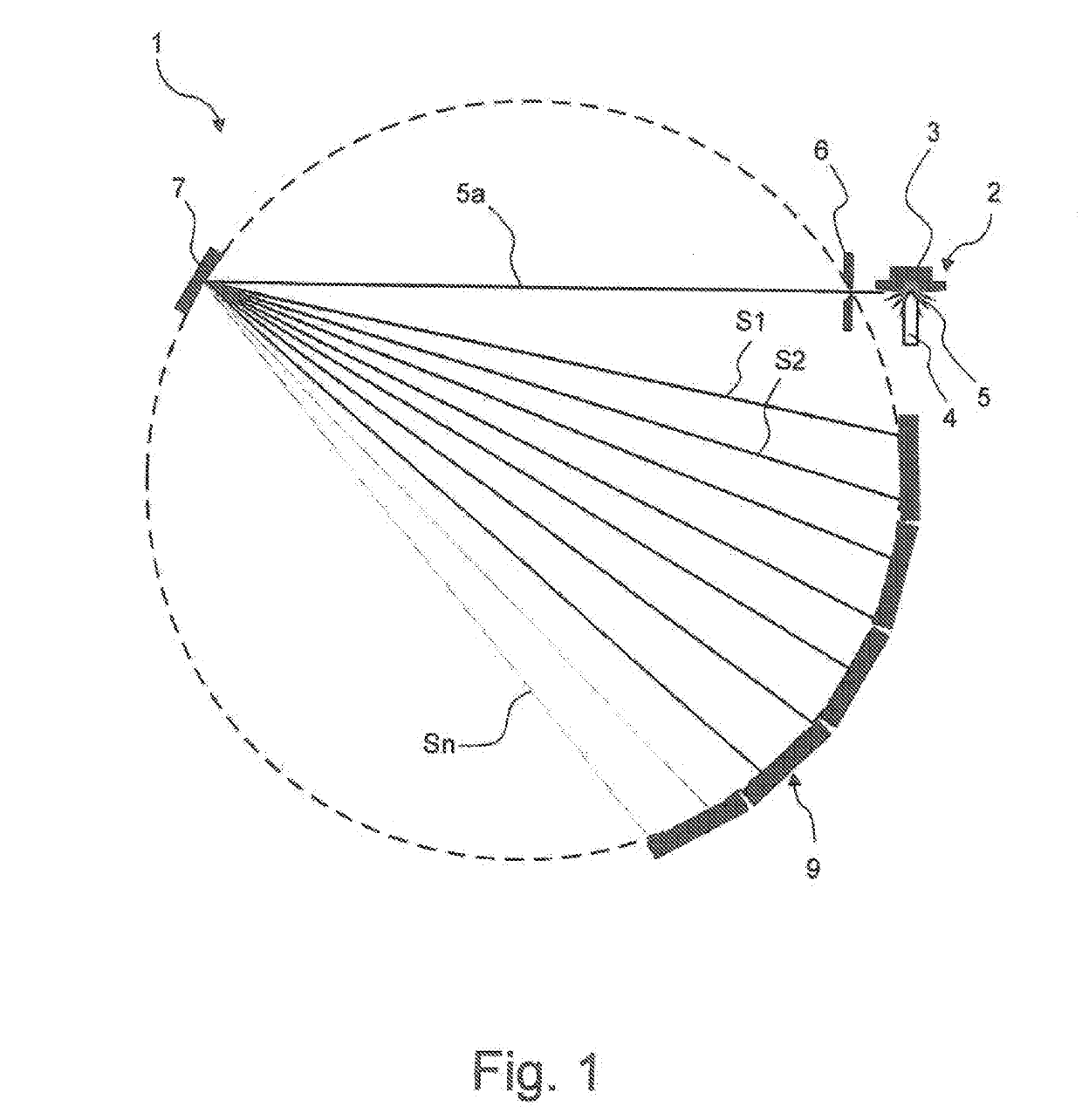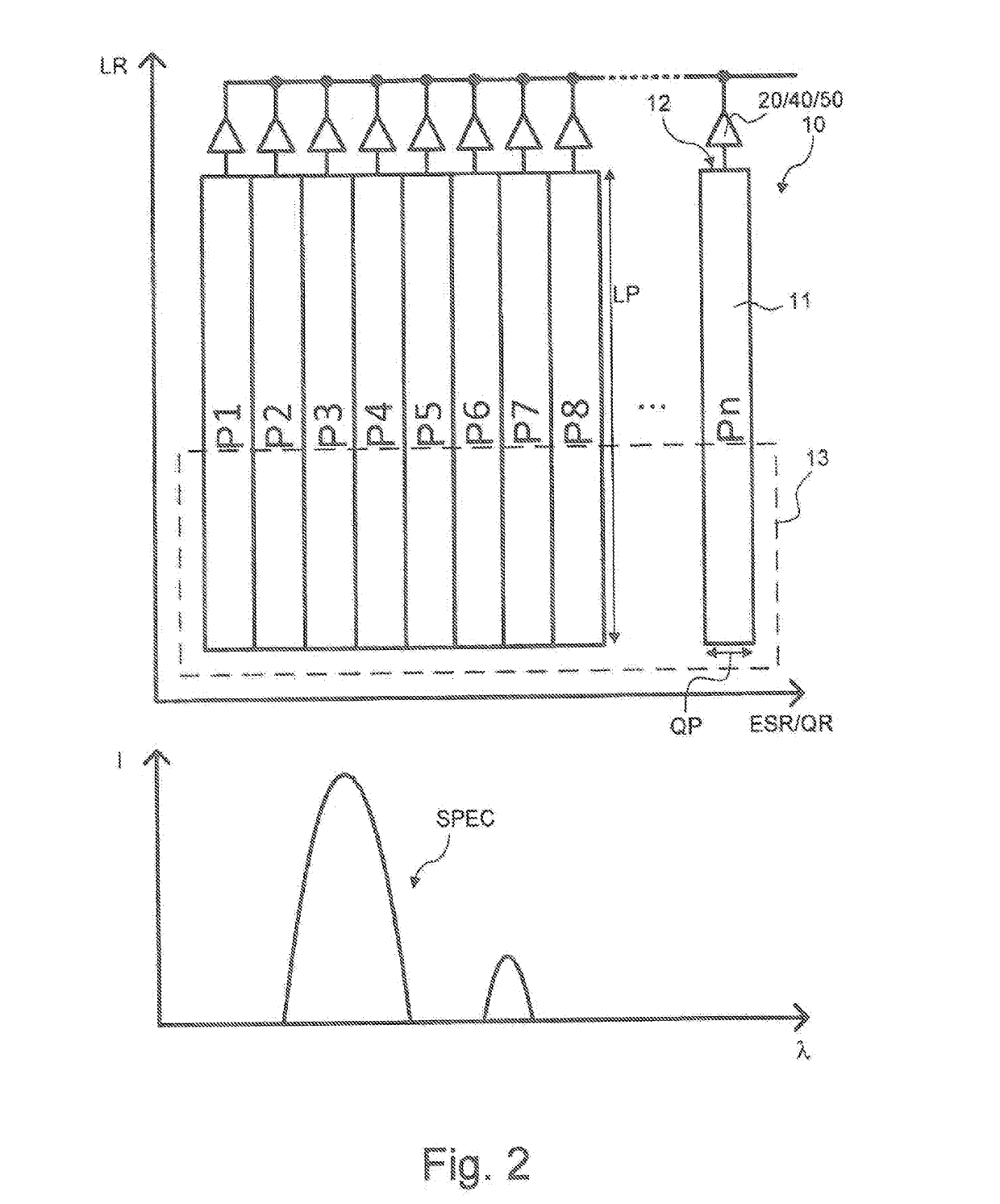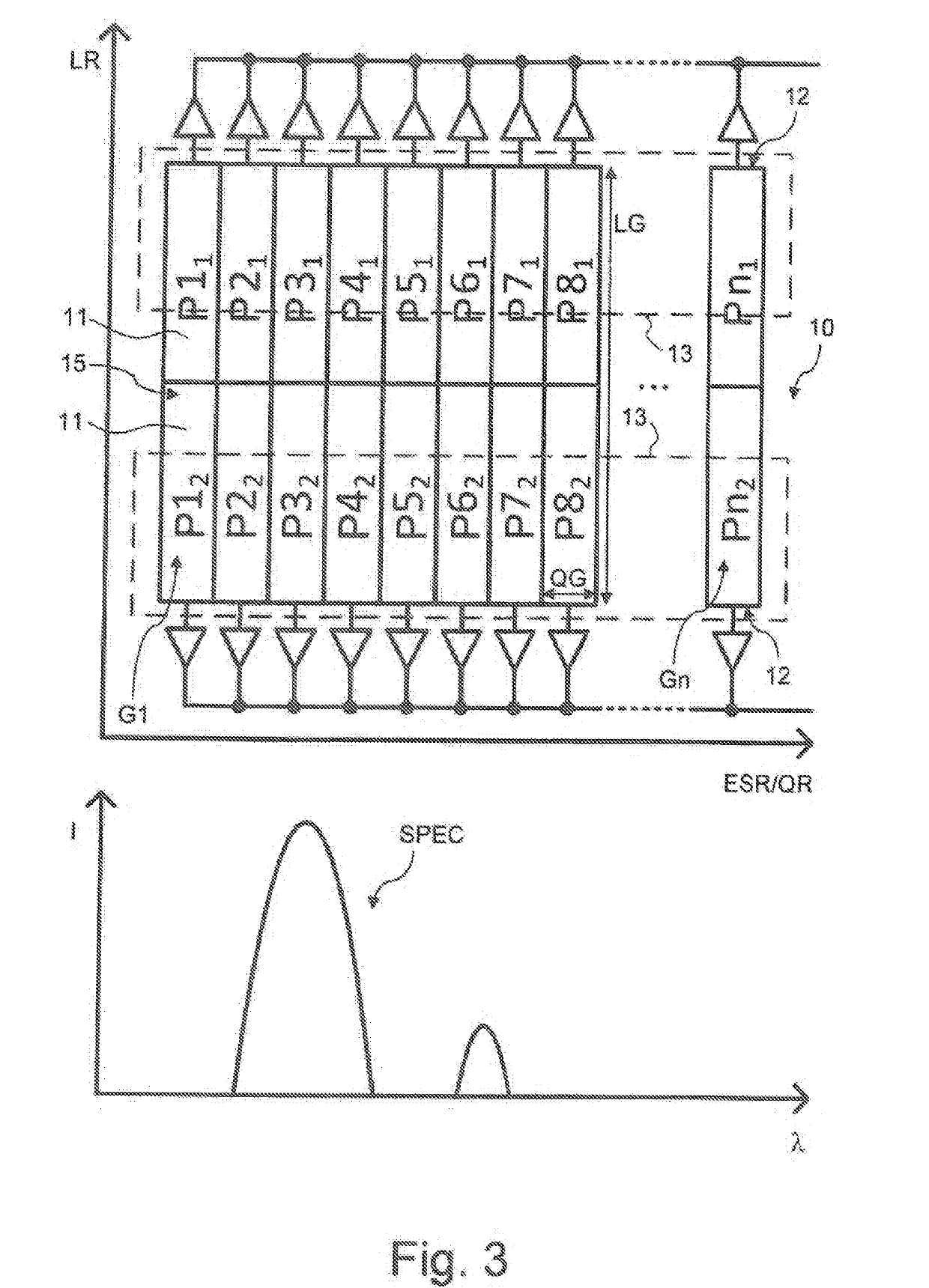Optical emission spectrometer with cascaded charge storage devices
a charge storage device and optical emission spectrometer technology, applied in the field of optical emission spectrometers, can solve the problems of complicated later modification, limited measurable spectral lines due, and increased production costs with the number of desired spectral lines, and achieves easy comparison, good spectral measurement of the sample, and easy setting up a corresponding dynamic measurement range.
- Summary
- Abstract
- Description
- Claims
- Application Information
AI Technical Summary
Benefits of technology
Problems solved by technology
Method used
Image
Examples
Embodiment Construction
[0046]FIG. 1 shows an embodiment of an optical emission spectrometer 1 according to the invention. The spectrometer 1 comprises an excitation device 2, in the present case what is known as a spark stand, to which a pulsed DC voltage is applied between a sample 3, in the present case a metallic sample which is used as a first electrode, and a mandrel-shaped counter element 4, which is used here as a second electrode. With each DC voltage pulse, a spark discharge occurs between the two electrodes, wherein material is separated from the sample 3 and atoms of the sample material are transformed into a plasma state. Upon re-filling of the electron shells of the atoms, a characteristic emission of light 5 occurs. Typically, between 100 and 2000 spark discharges (also referred to as “sparks”) per second are produced. A typical voltage of the DC voltage is between 3 kV and 10 kV, typically around 5 kV. The individual DC voltage pulse has a length of typically 50 μs to 250 μs, typically arou...
PUM
 Login to View More
Login to View More Abstract
Description
Claims
Application Information
 Login to View More
Login to View More - R&D
- Intellectual Property
- Life Sciences
- Materials
- Tech Scout
- Unparalleled Data Quality
- Higher Quality Content
- 60% Fewer Hallucinations
Browse by: Latest US Patents, China's latest patents, Technical Efficacy Thesaurus, Application Domain, Technology Topic, Popular Technical Reports.
© 2025 PatSnap. All rights reserved.Legal|Privacy policy|Modern Slavery Act Transparency Statement|Sitemap|About US| Contact US: help@patsnap.com



